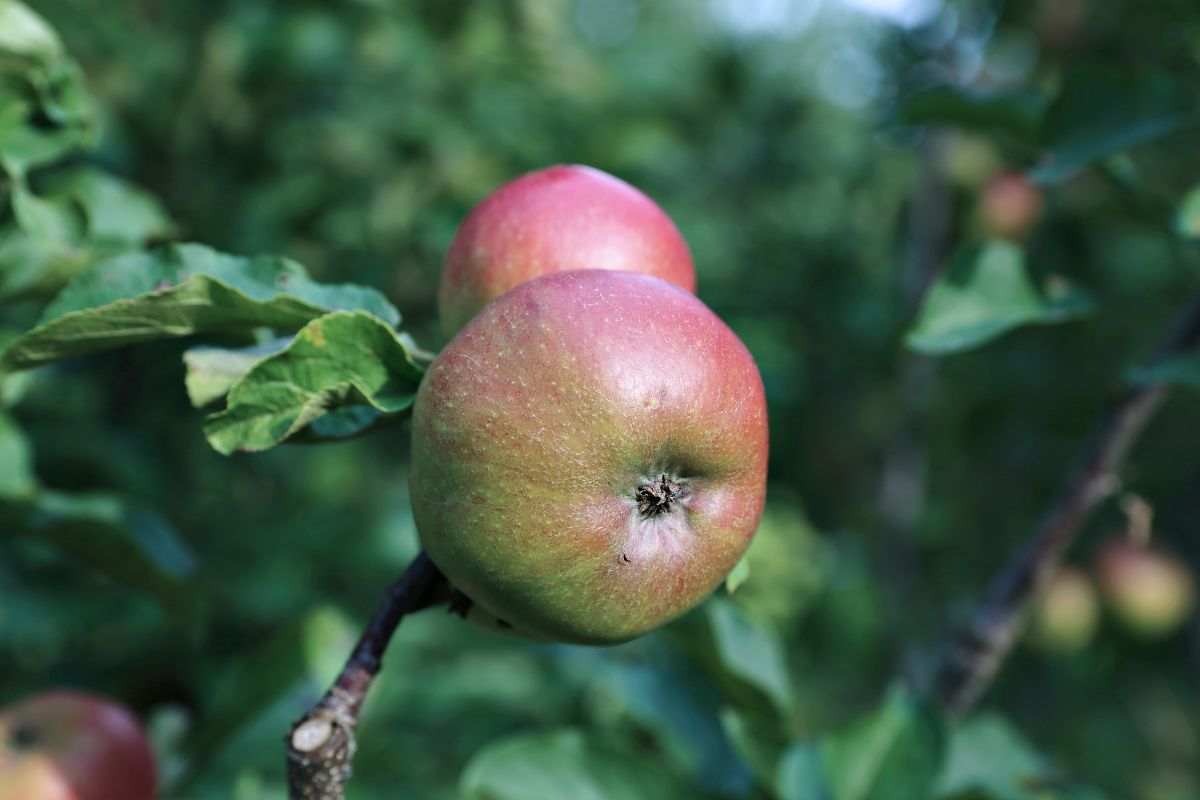If you’re an avid gardener with limited outdoor space, you may have thought that growing fruit trees is out of the question. However, with the rise of fruit trees for small gardens, this is no longer the case. These compact trees are perfect for balconies, patios, and small gardens, providing all the benefits of traditional fruit trees without taking up too much space.
In this post, we’ll explore the world of fruit trees for small gardens, sharing the best varieties for those with limited space. We’ll also provide tips on caring for these trees and maximizing your harvest. With our help, you can soon enjoy the delicious taste of fresh fruit from your own garden, even if it’s small!
What Is Considered a Dwarf Tree?
Generally, a dwarf tree is defined as one that reaches up to 50% of the height of its full-sized counterpart. For example, a dwarf apple tree can reach up to 12 feet tall. In comparison, its full-sized counterpart will usually grow between 20 and 30 feet in height.
Growing dwarf trees is a horticultural practice that involves artificially keeping a tree smaller than it would naturally reach. This is often accomplished by pruning, root pruning, and grafting techniques that restrict the tree’s size. An example of this is the practice of an ancient Japanese art known as bonsai, and it allows you to enjoy a full-sized tree in a fraction of the space. Though bonsai can be practiced on a wide variety of trees, it’s not commonly done on fruit trees.
Which Dwarf Trees Are Best For Small Gardens?
When selecting dwarf fruit trees for your small garden, it’s essential to consider which variety is best suited for your climate, soil type, and desired harvest time. Below are some of the most popular dwarf fruit trees to consider:
1. Columnar Apple Tree
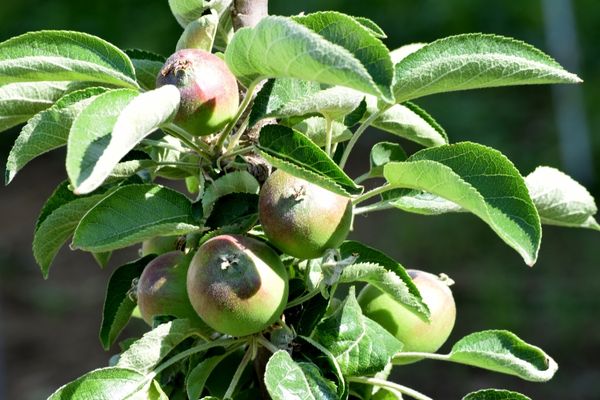
- Height: 8-10 feet
- Fruit production time: 1 year
- Best planting zones: USDA zones 4-9
- Best time to Harvest: September
Columnar apple trees, just like their name suggests, grow in a narrow, upright column-like shape. This makes them ideal for small gardens, patios, or balconies. These trees have a unique growth habit and can reach about 8 to 10 feet but only spread about 2 to 3 feet wide.
They also produce delicious apples similar in flavor to traditional apple trees but are smaller in size. Columnar apple trees are very easy to maintain and require less pruning than traditional apple trees, only needing occasional pruning to shape them.
And because apple trees don’t self-pollinate, remember to plant at least two trees to ensure the best fruit production. In most cooler climates, you can plant in the spring; in warmer climates, it’s best to wait until early fall.
2. Conference Pear Tree
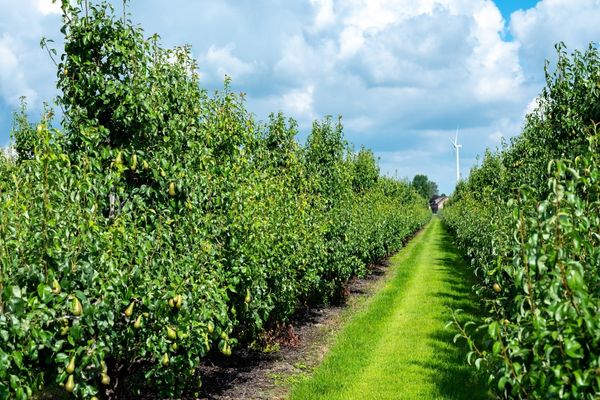
- Height:12-15 feet
- Fruit production time: 4-6 years
- Best planting zones: USDA zones 5-8
- Best time to Harvest: September to October
Pears are among the most popular fruit trees for most gardeners across the country. For this reason, it’s quite easy to find dwarf species with a smaller footprint.
Conference pear trees are a great choice for small gardens and patios because of their compact size, reaching up to 12-15 feet tall. Just like apple trees, pear trees require two varieties to successfully pollinate one another, so ensure you have enough space for two.
The tree is incredibly fruitful, producing generous amounts of fruit that clump together like bunches of bananas.
3. The Johnson Plum Tree
- Height: Up to 10 feet
- Fruit production time: 3 to 4 years
- Best planting zones: USDA Zones 5-9
- Best time to Harvest: Summer months
The Johnson Plum Tree, or Prunus domestica, is a great addition to your small garden. Native to Southwest Asia, these domesticated plums are smaller in size compared to the traditional European varieties, often reaching a height of 8- 10 feet. However, with proper pruning techniques, you can keep them much shorter in height, depending on your space’s size.
The Johnson plum tree takes three to four years to bear fruit and is considered a cross-pollinating variety, so it’s best to plant two in your garden for the best harvest. The tree is a great choice for those looking for an edible ornamental tree, as the fragrant white flowers will bloom in spring, followed by red and yellow plum fruits in summer.
4. Stella Cherry Tree
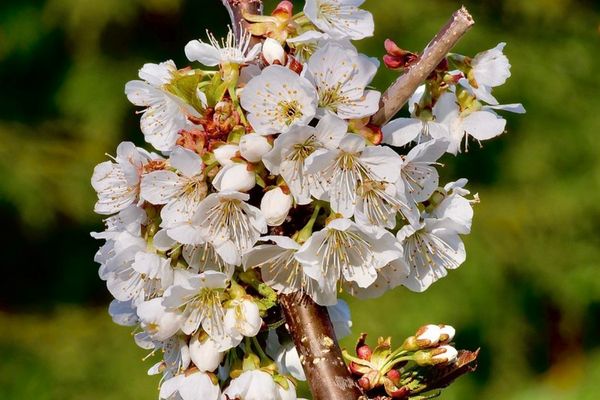
- Height: Can grow between 12-18 feet
- Fruit production time: 1-4 years
- Best planting zones: USDA Zones 5-9
- Best time to Harvest: Between June and July
In the world, few things are as beautiful as a blooming cherry tree during the spring. How those soft and light white and pink flowers dress the tree is truly mesmerizing. And if you’re looking for a dwarf variety for your small garden, the Stella cherry tree is an excellent choice.
Stella cherry trees are a cross between two popular cherry varieties, the sweetheart and the black Tartarian. These trees are highly productive and disease-resistant, so you don’t need to worry about pests or fungus infections. Additionally, this variety is self-pollinating, so you don’t need to plant two; however, it is advisable to plant two so that you can enjoy a higher yield.
These trees are also low-maintenance and can reach a height of 12 to 18 feet if left unpruned, although it’s recommended to trim branches occasionally for better structure and fruit production.
5. The Celeste fig tree
- Height: 7-10 feet
- Fruit production time: 1-2 years
- Best planting zones: USDA Zones 6-9
- Best time to Harvest: July
Also known as the Sugar fig tree, the Celeste fig tree is known for its sweet and delicious fruits. This cultivar is native to the United States, specifically Louisiana, and is a small tree with medium-sized leaves.
The tree produces a very attractive fruit that ranges in color from vibrant yellow to deep violet or even brown, with a sweet flavor that makes it a great addition to any garden. And unlike most fig trees, the Celeste is cold-hardy and can withstand temperatures down to 10°F. However, if you live in an area with extremely cold winters, it’s best to bring your Celeste indoors during winter.
6. Meyer Lemon Tree
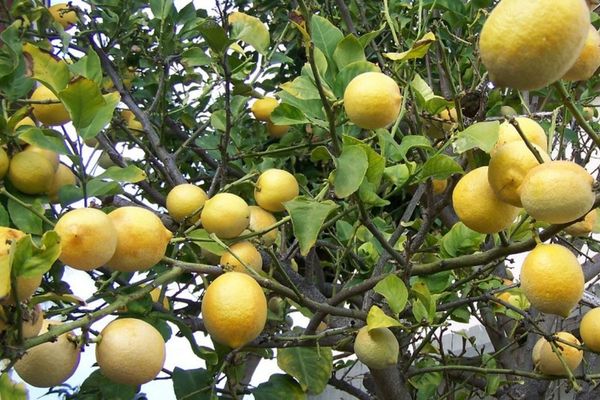
- Height: Can grow between 4 to 6 feet
- Fruit production time: 2 years
- Best planting zones: USDA Zones 8-11
- Best time to Harvest: During the winter
The Meyer lemon is the most famous variety of lemon and is known for its sweeter taste compared to other lemons. This small citrus tree is relatively easy to care for, making it a great addition to any small garden.
Meyer lemons are a citrus hybrid that infuses the perks of both mandarin oranges and lemons into one gorgeous tree. This makes their distinctive tart sweetness unparalleled, perfect for baking desserts, making jams, and creating delicious drinks.
Harvesting tip: Never harvest the fruit until its skin color is as yellow as an egg yolk.
7. Elberta Peach Tree
- Height: 8-10 feet
- Fruit production time: 3-4 years
- Best planting zones: USDA Zones 5-9
- Best time to Harvest: Early July
There’s nothing quite like biting into a succulent, ripe, and juicy peach on a hot summer day. And what better way to enjoy this sweet treat than to pick it off your own Elberta Peach tree in the comfort of your backyard??
Growing up to 10 feet tall, this peach tree best suits those with limited garden space. It can also tolerate a range of climates, from the cold climate of Zone 5 to the hot summers of Zone 9.
Elberta peaches are large and round in shape, and their skin color ranges from yellow to orange, depending on how ripe they are. They’re known for their sweet, juicy flavor, making them perfect for jams, preserves, and desserts. Plus, you can harvest your peaches in early July, so you don’t have to wait too long to enjoy the fruits of your labor.
8. Ice Cream Mango Tree
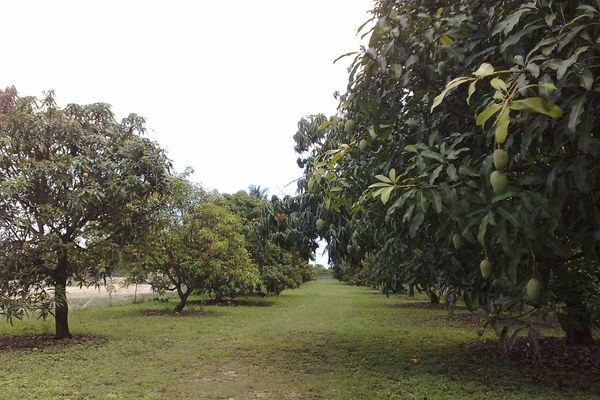
- Height: 6 feet tall
- Fruit production time: 2-3 years
- Best planting zones: USDA Zones 9-11
- Best time to Harvest: Late March
Did you know that regular-sized mango trees grow over 100 feet tall? Well, if you want the delicious taste of mangoes without the need for pruning and maintenance, then the Ice Cream Mango Tree is your best bet!
Thanks to grafting, this dwarf tree stands at 6 feet tall, making it a great addition to any backyard, patio containers, and even indoors.
The Ice Cream Mango tree produces sweet, juicy mangoes with a delightful hint of honey – perfect for making deserts, adding to smoothies, and even eating as is! Plus, you won’t have to wait long for your mangoes, though it takes 2-3 years for this tree to reach maturity. The tree is also incredibly easy to care for, needing little more than regular watering and fertilization.
9. Kazake Pomegranate Tree
- Height: Up to 6 feet in length
- Fruit production time: 1-2 years
- Best planting zones: USDA Zones 4-10
- Best time to Harvest: Between September to October.
Pomegranates are one of the most fascinating fruits. At first glance, they look like apples with glossy exteriors; cut them open, and you will discover a whole new world inside!
Bursting with flavor and texture, the tiny red seeds inside a pomegranate create an irresistible snack! They tantalize your taste buds with a sweet-tart zest that is sure to leave you wanting more. So why not try adding them to salads and couscous dishes or just enjoy them as they are by planting the Russain Kazake Pomegranate tree?
Kazake is a beauty, standing at 6 feet tall, that can flourish even in freezing temperatures. This hardy dwarf tree grows best in USDA zone 4 and blooms with stunning orange flowers each spring. When the petals fall away, they leave behind large fruits filled with sweet-tart seeds – a delectable treat for any gardener!
10. Washington Navel Orange
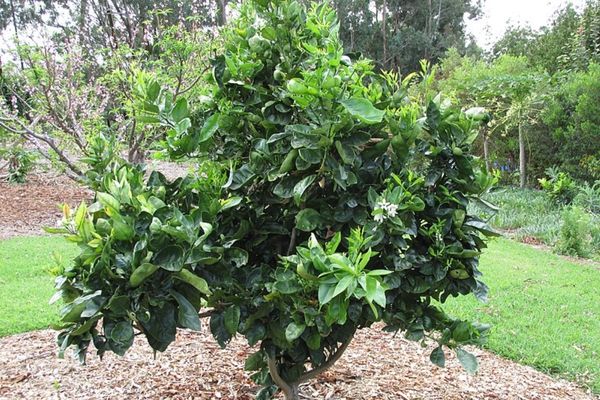
- Height: 7-15 feet for a dwarf tree and 3 feet tall for a petite tree
- Fruit production time: 4 years
- Best planting zones: USDA Zones 9-10
- Best time to Harvest: Between November and June
The Washington Navel Orange trees allow you to bring a little bit of Florida sunshine into your garden! These self-pollinating citrus trees are known for producing sweet, juicy, flavourful oranges that are seedless and easy to peel all year round. As such, they are among the most popular varieties in the United States.
The Washington Navel Orange is a hardy tree that is easy to grow and requires less care compared to other orange trees. They come in two varieties, dwarf and petite; the dwarf Washington Navel tree only grows up to 15 feet tall, while the petite tree stands at 3 feet, making it perfect for small spaces. Plus, you can expect your tree to start bearing fruit within four years of planting!
11. Black Mulberry (Morus nigra)
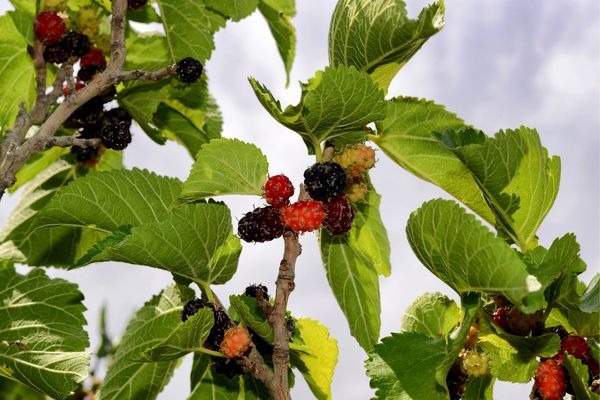
- Height: 2-9 feet
- Fruit production time: 2 years
- Best planting zones: USDA Zones 5-9
- Best time to Harvest: April- May
Although the Black Mulberry is often referred to as a bush because of its shrubby nature, these trees can be grafted and trained to grow into dwarf trees with a dense, rounded canopy. A regular mulberry tree can grow up to 40 feet tall, while the dwarf version can be kept under 10 feet.
But, no matter what shape and size you choose for your tree, one thing remains the same: its abundant fruit production! Of all the mulberry species, black mulberries are the tastiest, most succulent, and best for fresh eating.
They have a sweet-tart flavor that pairs well with everything from salads to desserts! Plus, they take just two years to start bearing fruit, so you won’t have to wait too long before you can enjoy their juicy goodness.
